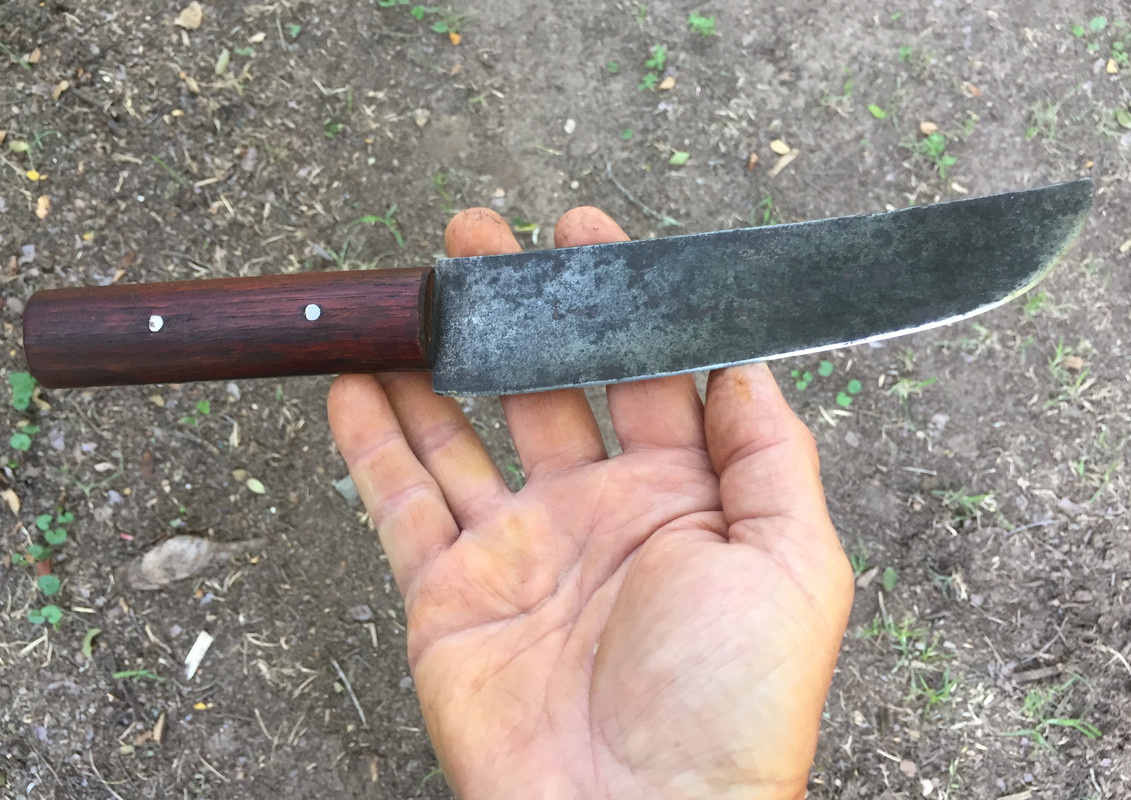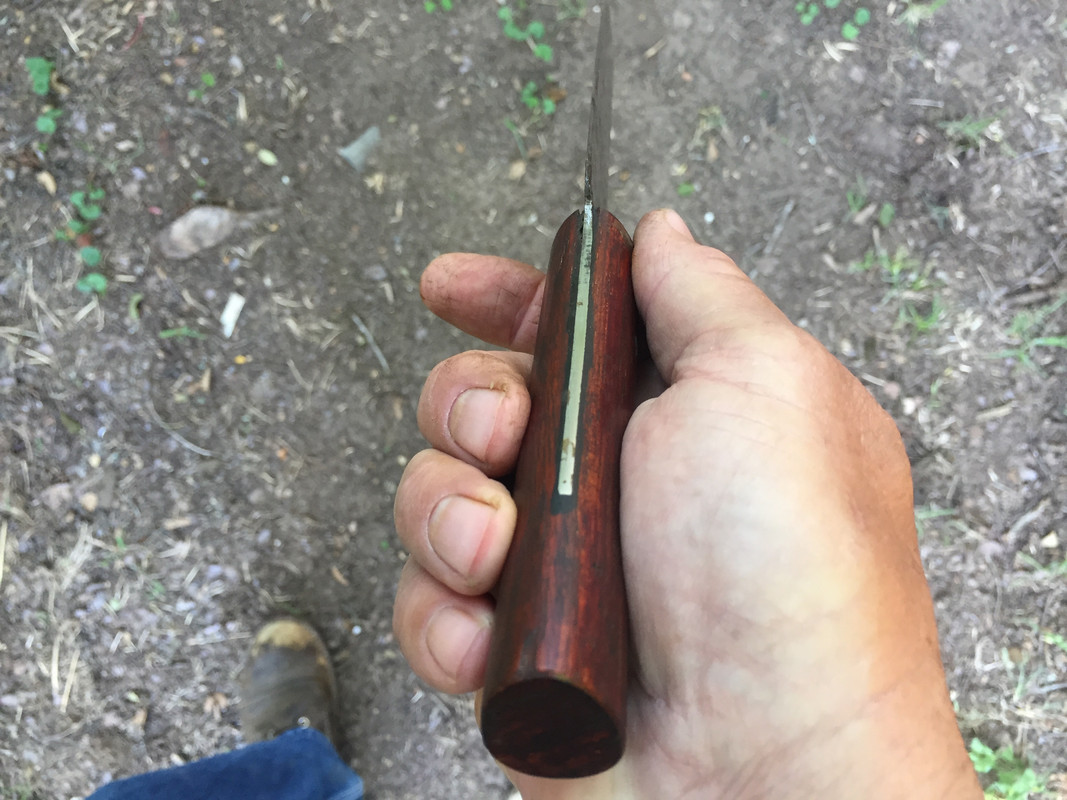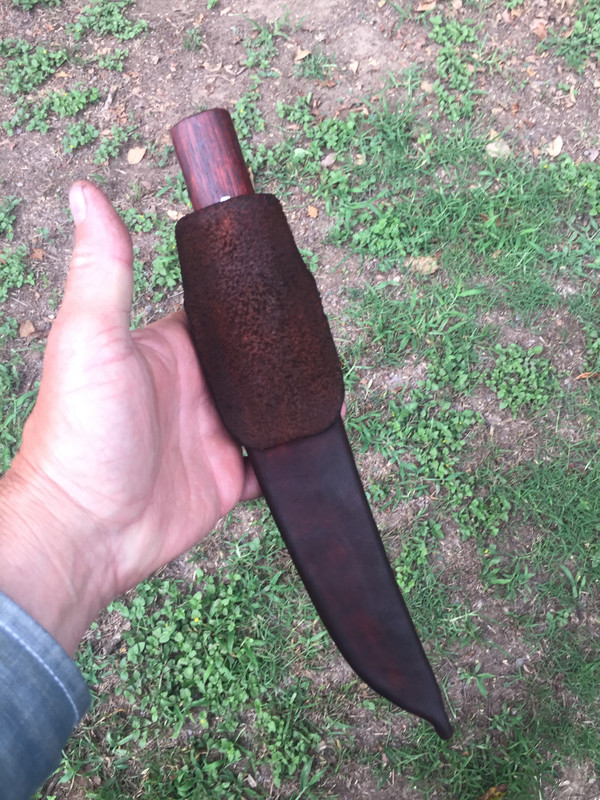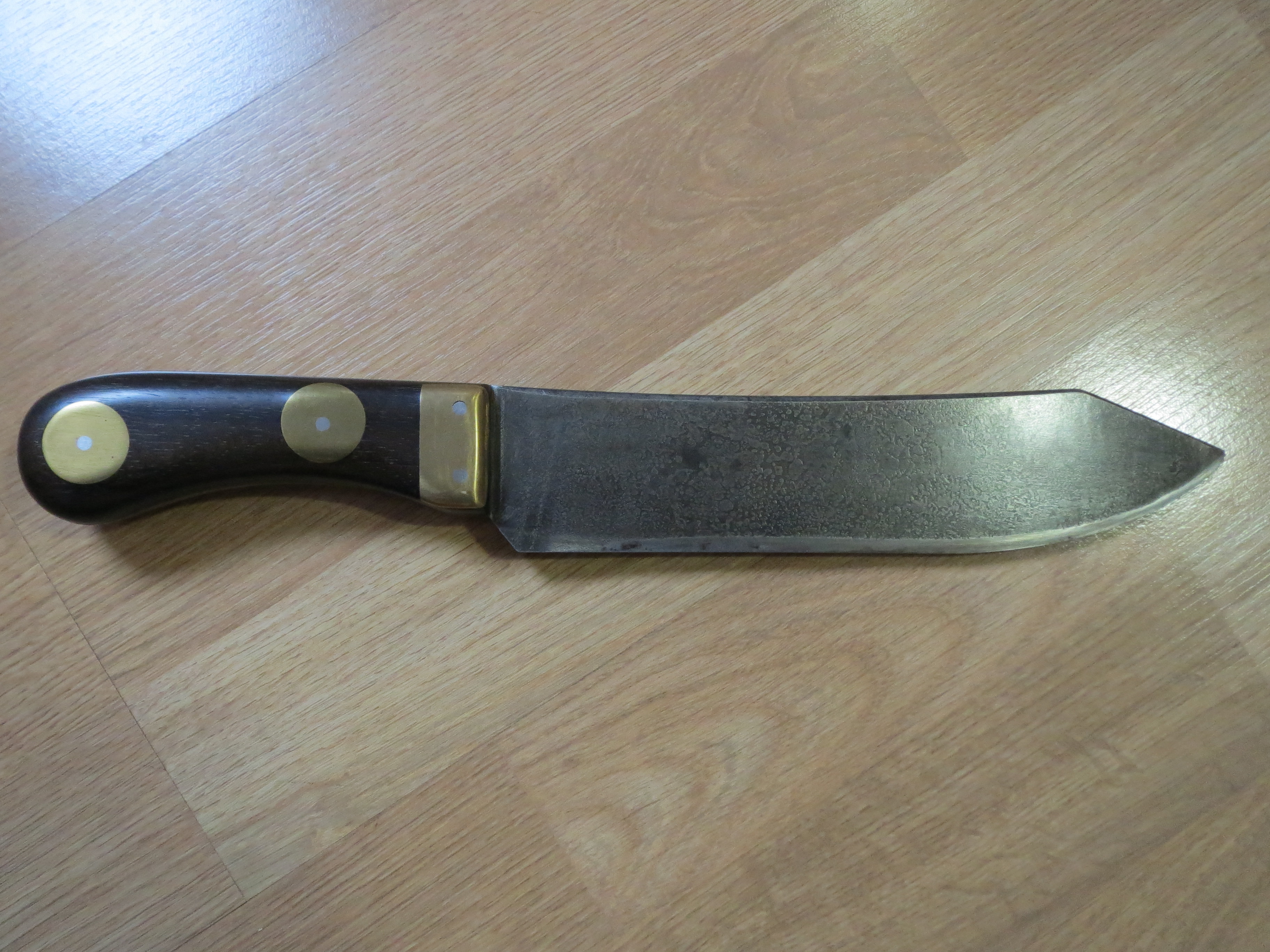I carry the knife because the last time I tried to open a potato chip bag with my Brown Bess, there were issues.The bear tasted great. the blade is from a early 1800 saw mill blade.
-
This community needs YOUR help today. We rely 100% on Supporting Memberships to fund our efforts. With the ever increasing fees of everything, we need help. We need more Supporting Members, today. Please invest back into this community. I will ship a few decals too in addition to all the account perks you get.

Sign up here: https://www.muzzleloadingforum.com/account/upgrades -
Friends, our 2nd Amendment rights are always under attack and the NRA has been a constant for decades in helping fight that fight.
We have partnered with the NRA to offer you a discount on membership and Muzzleloading Forum gets a small percentage too of each membership, so you are supporting both the NRA and us.
Use this link to sign up please; https://membership.nra.org/recruiters/join/XR045103
You are using an out of date browser. It may not display this or other websites correctly.
You should upgrade or use an alternative browser.
You should upgrade or use an alternative browser.
Let's see your Belt or Rifleman's knife
- Thread starter jonathan butcher
- Start date

Help Support Muzzleloading Forum:
This site may earn a commission from merchant affiliate
links, including eBay, Amazon, and others.
- Joined
- May 30, 2020
- Messages
- 831
- Reaction score
- 742
Nice knife and sheath, Rich is one of my fav makers !
Rich McDonald of Longknives and Leather made this Riflemans knife 10" blade for me. His wife Jeanne made the rawhide lined sheath
Such great knives, I've managed to collect a dozen or so but only two might be considered HC. I love my Jeff White knife and regularly use it to cut patches at the muzzle. Easy to hone, resharpen and maintain too. My intimidation knife is made a file and while the maple wood scales provide a good grip, the length of the blade is too much to be of much use around camp. The spine throws a good deal of sparks when struck with a good size flint though and would no doubt immediately adjust the attitude of whomevero
Here are a couple pics of my favorite Jeff White knife (Bush HD) from a hike yesterday.




Desperate Lee
45 Cal.
Greg Childress. Doesn't really fit here. Want to show it.
View attachment 34695View attachment 34696
i just love Damascus blades. Also love bone, real bone, handles. When i come across them i usually buy them. Will post pictures later.
DL
Treestalker
Treestalker
- Joined
- Mar 24, 2014
- Messages
- 4,051
- Reaction score
- 3,739
- Location
- Third Pond from the Great God Helios
True beauty like that is timeless. Just don't get caught by the PC police, LOL!Greg Childress. Doesn't really fit here. Want to show it.
View attachment 34695View attachment 34696
jbwilliams3
45 Cal.
- Joined
- Dec 23, 2006
- Messages
- 688
- Reaction score
- 153
My primary interest is 18th century and I am most familiar with the Anglo-made material history (French trade knives are another subject). The relatively small number of individuals (in comparison to the overall population) who would have carried a knife on a belt would be using cheap Sheffield (or Sheffield knock-off) butcher/trade or "scalping knives" (used in the period as a marketing term for common butcher knives). These were cheap and perfect for their intended uses. The English knives were half-tang, usually three pinned and handled in exotic hardwood, and had cutlers resin filling gaps between the tang and handle. They are common in the archeological record, were imported by the thousands with and without sheaths, and were used by Natives and Europeans alike. These two repros were made by Ken Hamilton.

Here are some originals:




Here are some originals:



jbwilliams3
45 Cal.
- Joined
- Dec 23, 2006
- Messages
- 688
- Reaction score
- 153
- Joined
- May 30, 2020
- Messages
- 831
- Reaction score
- 742
Perfection
This is probably my favorite knife though, made by Kyle Willyard. I use a scalper or a folding knife for living history, but this one for hunting and everything else.
View attachment 34907
Better late than never... Here’s my Steve Baxter made knife.



12 1/4” overall with a 7 1/2” cutting edge.
A well made useful knife, of which I’m proud too own.



12 1/4” overall with a 7 1/2” cutting edge.
A well made useful knife, of which I’m proud too own.
Since this thread looks like it is open to any kind of belt knife I will post this picture of a pig sticker I made for a fellow down in South Texas. Double edged, forged from a Nicholson rasp. Those South Texas boys like to get

 up close and personal.
up close and personal.


Cruzatte
50 Cal.

Made by Tim Ridge.
- Joined
- May 30, 2020
- Messages
- 831
- Reaction score
- 742
I love everything Tim Ridge does, very talented artisan and maker.
View attachment 36062
Made by Tim Ridge.
[/QUOTE]
View attachment 36062
Made by Tim Ridge.
View attachment 36062
Made by Tim Ridge.
[/QUOTE]
Einsiedler
40 Cal.
I found this old blade in the barn when grandmaw and grandpaw sold the farm in 1964. I believe about 4 or 5 inches of the tip end were broken off and grandpaw repurposed it and used it for his hog and beef butchering knife. Had no handle. Other day I cut off about 2" of the handle end and stuck a piece of broke hatchet handle on it with a couple of iron pins.


Made an inside the belt sheath for it. Used it other day when old son, his father in law, and I butchered a 750 lb steer. Worked great!



Made an inside the belt sheath for it. Used it other day when old son, his father in law, and I butchered a 750 lb steer. Worked great!

- Joined
- Mar 23, 2015
- Messages
- 4,891
- Reaction score
- 3,411
I like it Einsiiedler and it has history and is repurposed. All of those add to its shine.
Similar threads
- Locked
- Replies
- 18
- Views
- 2K
- Replies
- 7
- Views
- 2K
- Replies
- 4
- Views
- 2K
- Locked
WITHDRAWN
Rich McDonald 18th century Belt Knife
- Replies
- 0
- Views
- 902










